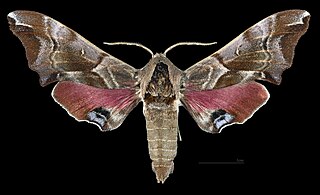
Polyommatus eros, the Eros blue or common meadow blue, is a species of blue butterfly found in the Palearctic.

Plebejus is a genus of butterflies in the family Lycaenidae. Its species are found in the Palearctic and Nearctic realms.

Erebia is a Holarctic genus of brush-footed butterflies, family Nymphalidae. Most of the about 90–100 species are dark brown or black in color, with reddish-brown to orange or more rarely yellowish wing blotches or bands. These usually bear black spots within, which sometimes have white center spots.

Lysandra is a genus of butterflies in the family Lycaenidae.

Muschampia is a Palearctic genus of spread-winged skippers in the family Hesperiidae.

Pseudochazara is a genus of butterflies within the family Nymphalidae.

Smerinthus kindermannii, the southern eyed hawkmoth, is a species of moth of the family Sphingidae. It is found throughout the central Palaearctic Region, from Turkey, Cyprus and Lebanon, east through Iraq, Iran, Afghanistan and northern Pakistan to Kashmir. From there, north and north-east through Turkmenistan, Uzbekistan, Tajikistan, Kyrgyzstan and Kazakhstan, to north-western China. It has also been reported from Israel and Kuwait.

Hyponephele is a genus of butterflies of the subfamily Satyrinae in the family Nymphalidae. Most range from Europe into central Asia with a few in northern Africa. They are commonly called meadowbrowns.

Polyommatus iphigenia is a butterfly of the family Lycaenidae. It was described by Gottlieb August Wilhelm Herrich-Schäffer in 1847. It is found in the Balkans and Asia Minor.









